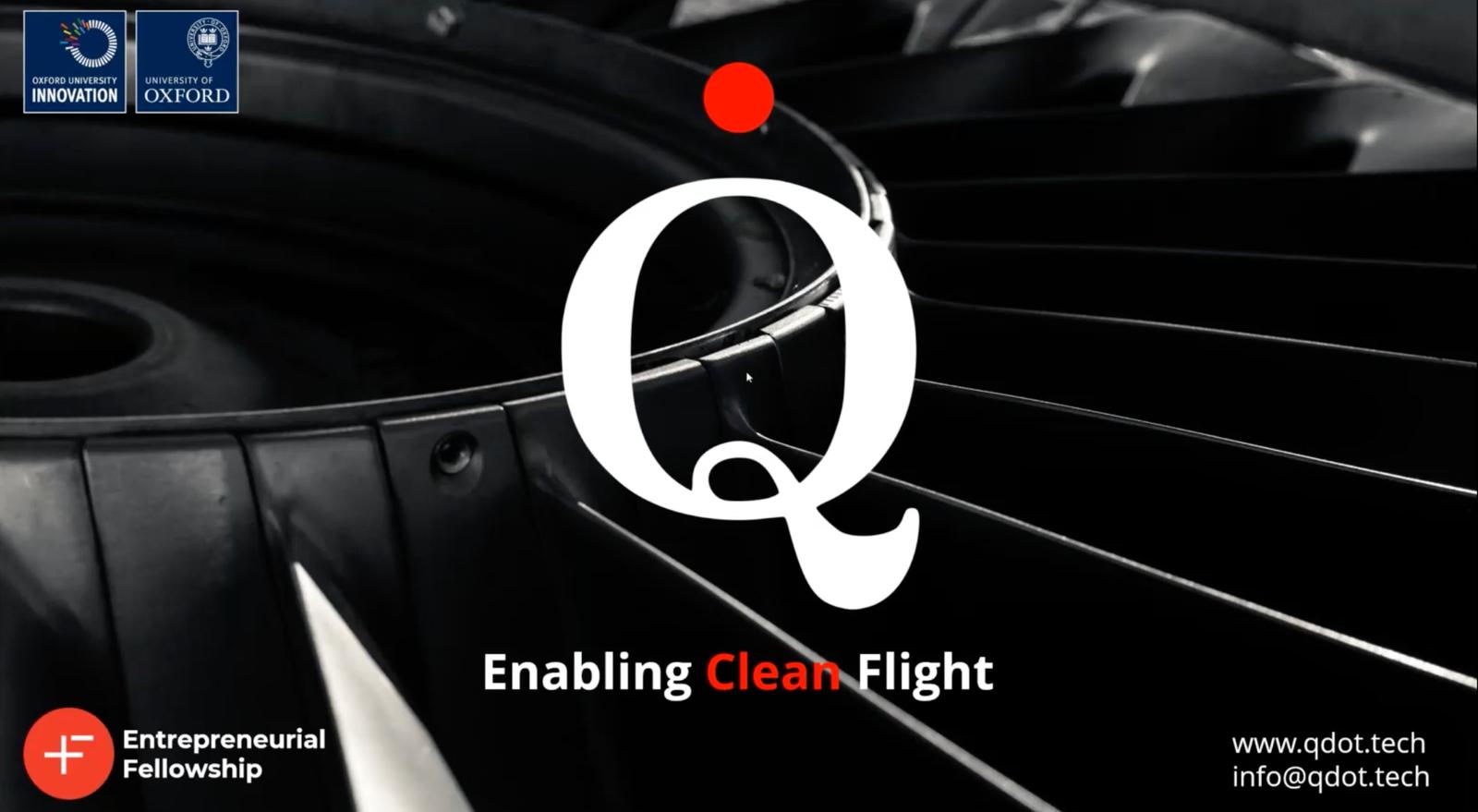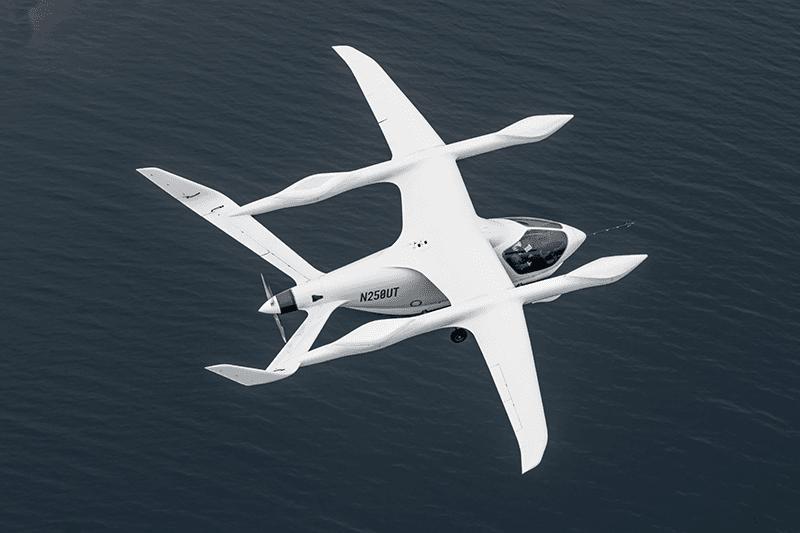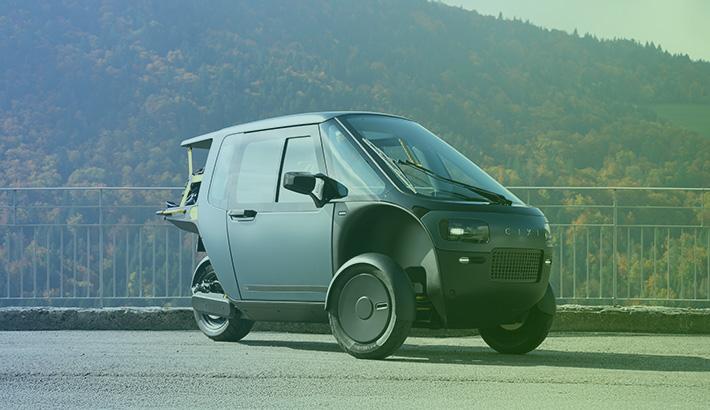
3:49
Aircraft innovators are doing their part to create greener, more sustainable planes with hybrid batteries or fully electric solutions.
While airplanes aren’t the only pollution culprits, aviation still accounts for about 10% of carbon emissions produced by the transportation sector in the U.S., according to findings in 2019 by the U.S. Environmental Protection Agency. The transportation sector as a whole makes up about 29% of all emissions in the U.S.
To bring that number down, we are increasingly seeing clearer visions for a “greener” future with the rise in electric battery technology, more efficient fuel options, and more innovators ready to carve a path toward sustainability goals.
For Qdot Technology, a University of Oxford spin-out, a hybrid battery can help lower emissions by improving aircraft fuel efficiency. And BETA Technologies is working on a fully battery-powered aircraft. Let’s take a look at what these two innovators are working on.
How Will Qdot Power Clean Flights?

The Qdot team developed thermal management technology for heat sinks at nuclear fusion power plants. Now they’re taking that technology and applying it to aircraft engines and hybrid batteries with a new focus on green aviation technology. Qdot is focused on airplanes used by the agriculture, cargo delivery, and defense sectors.
More specifically, the team is working on a battery with better power density and improved life, an additive-manufactured heat exchanger prototype, and a battery-powered, integrated aircraft engine, which combines the two former technologies.
With a more powerful battery and durable heat exchanger, aircraft engines can rely less on fuel and more on electricity.
“Using a hybrid system like this will allow you to reduce your fuel consumption by 20% or more compared to a system wherein you only use a gas turbine to provide all the power,” said Holt Wong, Qdot Co-Founder and COO.
In the future, Qdot hopes fuel cell technology continues to mature, so the gas turbine portions in their engine can be swapped out and “get completely zero carbon emissions during operation.”
Wong spoke with the Onshape team to discuss Qdot’s technology and goals. Watch the webinar, How Qdot designs clean flight technology with Onshape, to learn about Qdot's history and future.
Electric Flights by BETA Technologies
The wings of BETA’s ALIA aircraft were designed to resemble the wings of a migrating seabird.

BETA Technologies is a major developer of electric vertical takeoff and landing (eVTOL) aircraft for the cargo and logistics market.
eVTOL planes provide similar environmental benefits to electric vehicles: zero emissions, no combustion engine, and no burning of fossil fuels. Solar-powered stations will also be used to charge batteries. Due to the fact that electric planes have considerably fewer parts than traditional planes, they have cheaper maintenance and operational costs.
The Burlington, Vermont, company has developed a sleek eVTOL aircraft, called the ALIA-250c, which takes off and lands vertically like a helicopter and converts to long-range flying like an aircraft. It looks like a seabird with a roof rack and propellers from above.
The Arctic Tern, a species that flies farther than any other bird, is the inspiration for the wing shape. Every year, it migrates between the Arctic Circle and Antarctica, however, the current range of the ALIA is 250 nautical miles between battery charges.
The hope is to replace fleets of short-haul trucks with a more fuel-efficient solution. BETA spoke with Onshape about future goals and how they plan to achieve them. Head to our Case Studies page to read about it.
Onshape’s Role in Powering Green Aviation Technology
Companies like Qdot and BETA are the leaders of tomorrow by making the incremental steps needed today to create a more sustainable future in green aviation technology.. And both use Onshape to collaborate on design data and iterate on new ideas.
Qdot’s Wong explained that Onshape has helped in a variety of ways.
“It’s very easy for us to use it anywhere,” he said. “It's great to be able to work on our CAD either at home or in the office using whatever computer we're on and not having to worry about copying files and etc. across [devices].”
At BETA, Onshape offered real-time data management solutions that remove bottlenecks that plague file-based PDM users. Plus, product development team members in Vermont and North Carolina can use the platform’s built-in collaboration features to expedite their communication enduring the design process.
In due time, companies like Qdot and BETA will lead the way to greener aviation technology airplanes, better fuel efficiency, and a net-zero future – all with the help of cloud-native platforms like Onshape.
Try Onshape Today
Head to our sign-up page to choose the right CAD plan for you and your team.
Latest Content

- Case Study
- Automotive & Transportation
Zero Crashes, Limitless Collaboration, One Connected Workflow With Cloud-Native Onshape
12.04.2025 learn more
- Blog
- Becoming an Expert
- Assemblies
- Simulation
Mastering Kinematics: A Deeper Dive into Onshape Assemblies, Mates, and Simulation
12.11.2025 learn more
- Blog
- Evaluating Onshape
- Learning Center
AI in CAD: How Onshape Makes Intelligence Part of Your Daily Workflow
12.10.2025 learn more
- Blog
- Evaluating Onshape
- Assemblies
- Drawings
- Features
- Parts
- Sketches
- Branching & Merging
- Release Management
- Documents
- Collaboration
Onshape Explained: 17 Features That Define Cloud-Native CAD
12.05.2025 learn more



